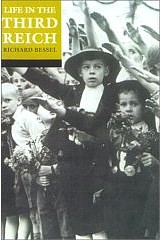| Old
Announcements
(back to top)
The announcements sent
via Gauchospace end here.
- Mar. 24, 2009: This quarter I used the Gauchospace course website,
with mixed results. Integrated email is nice, and uploading the midterm
questions is easier, but the rest can be a pain. And it doesn't make the
course materials themselves available after the course is over.
I've just updated the Student Essay Index
Page with this year's 37 essays.
Web option students should check their essays for the following,
and let me know if changes need to be made:
- Spelling of their name and the book info on the Index
page.
- Thesis statement is bolded?
- Italics did not get lost in the conversion?
- Block quotes are still block quotes
- All external links and internal navigation links work (note
that Ebsco, Jstor etc. won't work outside of the UCSB domain). Check all
links in the bibliography, navbar link.
- Do you think the annotations in your bibliography rate an * on the
index page?
Let me know and I'll review them.
- Mar 25, 2009 [emailed via Gauchospace]: grade distribution available;
web essays ready.
- As you probably know, your grades are available on GOLD now. I have
posted the "curve" (point to letter grade distribution) on my
course website:
http://marcuse.faculty.history.ucsb.edu/classes/133b.
- There you will also find the link to the 133b web option essays index
page, with a list of a few things for you to check. If you find any problems,
let me know--since email quickly gets overwhelming, please enter your notes
on the space on the Gauchospace site. Once you give me those, I can enter
the "links last checked" date.
- Thanks, and I hope you're having a good spring break.
- Mar. 25, 2009: Here is the distribution of grades
for the Winter 2009 Hist 133b course according to the
final point distribution--without the extra credit points. (20 students
accumulated 75 extra credit points, an average of 3.75, usually raising
their grade 1 step.)
If you want to contact me, read my note on grading,
below.
|
# students |
87-89pts=B+ 6 |
78-79 pts=C+ 0 |
D
0 |
|
| 93-98pts=A 14 |
83-86pts=B 6 |
74-77pts =C 2 |
F 1 |
|
| 88-92pts=A- 14 |
80-82pts=B- 4 |
70-73pts =C- 0 |
average: 89.5 |
total: 47 |
With the extra credit factored in, 20 students got an A, 12 A-, and 3 B+;
the rest stayed the same. I don't give A+, sorry.
- Nov. 4, 2010: We are going to have a guest speaker on the second day of class: Christian Petry, the author of one of the best books on the White Rose student resistance group in Munich, titled (in German): Students under the Guillotine.
- Nov. 5, 2010: The required books for Winter 2011 will be:
- Germans into Nazis by Peter Fritzsche (Harvard UP 1998)
($10/19 at amazon)
- The Nazi State and German Society: A Brief History with Documents by Robert G. Moeller (Bedford/St. Martin's Series in History and Culture, 2009) ($12 at amazon)
- A course reader of photocopied essays and sources.
|
 Rosa Luxemburg, 1917: 'Freedom is always also the freedom of those with differing opinions."
Rosa Luxemburg, 1917: 'Freedom is always also the freedom of those with differing opinions."



 Josie's
2002 book is Never Tell Your Name (
Josie's
2002 book is Never Tell Your Name (